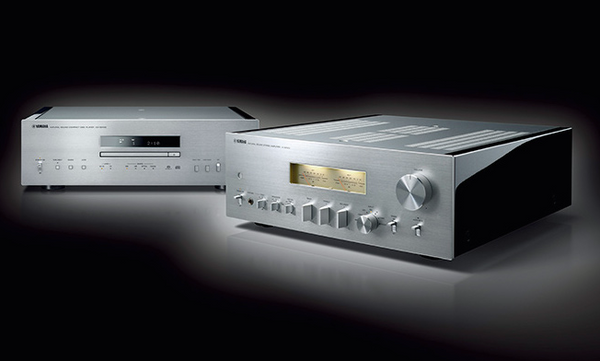Yamaha CD-S2100 CD Player
$3,499.00
Yamaha CD-S2100 CD Player
Very low stock for black variant. Call for availabilities.
Featuring a new circuit design for minimal signal loss, plus a high-precision drive mechanism for reproduction accuracy. This CD-S2100 is equipped with high-performance USB audio, DAC and other advanced functions.
- Left-right symmetrical construction, independent digital/analogue circuit configuration, with top priority on sound quality
- Digital/analogue circuitry with integrated power supplies and screw type connections eliminate signal transmission loss
- Single-stage configuration I/V conversion circuit enables direct analogue output
- Independent power supplies with complete separation of digital and analogue
- High precision CD drive for greater vibration resistance and high-precision signal reading
- Highly rigid aluminium CD tray
- Exceptionally high performance 32-bit D/A converter from ESS
- Built-in USB DAC functions, and ASIO 2.3 Yamaha Steinberg USB Driver
- Beautiful, sleek design and half-mirror display

Left-right symmetrical construction, independent digital/analogue circuit configuration, with top priority on sound quality
The CD-S2100 has completely symmetrical construction: the rotating loader mechanism is in the centre, the digital power supply and circuit board are on the left side, and the analogue power supply and circuit board are on the right. Completely isolating the digital unit and the analogue unit eliminates detrimental impacts of interference between the circuits, while achieving ideal weight balance. The centre frame that extends from the front to the back of the body and the front panel made of 5mm (1/4”) thick aluminium increases rigidity of the entire chassis and ensures stable disk play.
Digital/analogue circuitry with integrated power supplies and screw type connections eliminate signal transmission loss
The internal design of the CD-S2100 does not separate the power supply circuit boards, which include the power transformer; the block capacitors are mounted directly on the respective digital/analogue circuit boards. Thus, an original board configuration which integrates the power supply circuits was adopted. Eliminating cabling from the power supply circuits to each circuit board and mounting directly have the benefit of reducing connection loss, as well as achieving low impedance. Moreover, cabling from the power transformer utilises the same screw-type connections we’ve given the companion A-S2100 Integrated Amplifier. Connecting directly without soldering achieves thorough contact point loss and low impedance. Signal is transmitted to the amp without loss of any information that has been read, delivering sound reproduction filled with a sense of energy and crisp openness—the over-arching aim of the S2100 Series.
Single-stage configuration I/V conversion circuit enables direct analogue output
To thoroughly eliminate audio signal loss, the CD-S2100 adopts an innovative circuit configuration for the analogue circuit. The signal from the D/A converter is conventionally output as an analogue signal through an I/V conversion circuit configured in multiple stages. However, in the CD-S2100, the signal is output by a single-stage configuration based on a discrete design of the I/V conversion circuit. This single-stage configuration with high slew-rate sharply lowers audio signal loss compared to a multi-stage configuration circuit, and lowers NFB (Negative Feedback), eliminating any sonic suppression, resulting in a natural, spacious sound. The circuits beyond this D/A converter perform balanced transmission with a circuit configuration marked by symmetrical plus and minus sides. Using a balanced connection with the A-S2100 Floating and Balanced Power Amplifier lets you enjoy profoundly pure sound reproduction without any impact of transmission loss.
Independent power supplies with complete separation of digital and analogue
The CD-S2100 has adopted a twin power supply transformer method, complete with separate, dedicated power supply transformers for the digital and analogue circuits. Isolating the digital and analogue circuits starting at the transformer step eliminates sound quality deterioration caused by interference and noise between the digital and analogue units—a problem that occurs when they share the same power supply. This results in exceptionally clear, low-noise reproduction of analogue audio. Moreover, the power supply transformer for the analogue circuit is a toroidal transformer that provides stable power supply with low magnetic flux leakage, and the winding, stabilised power supply circuit is completely isolated on the left and right sides. This achieves superior separation—a particularly important point in Hi-Fi audio.
Please select all options.









